The month of March holds great significance for us at Refuge. Not only does it kick off with International Women’s Day shortly followed by Mother’s Day, but the entire month is dedicated to celebrating the remarkable women of history. As we come towards the end of this month, we’d like to take some time to highlight some historical women we believe deserve more attention.
London’s Blue plaques are a great way to learn about important historical figures who hold connections to London. But did you know that just 15% of London’s Blue Plaques are dedicated to women, and less than 5% to people from Black and Asian backgrounds1? By comparison, Black and Asian people make up 40% of those living in London2.
More recently, amazing initiatives such as English Heritage’s ‘Plaques for Women’ campaign3 and the Nubian Jak Community Trust4 have been working to spotlight a more diverse array of historical icons who deserve recognition for their contributions to making London the vibrant city it is today.
We think these women deserve better recognition, which is why we’ve put together this introductory – though by no means exhaustive – list of inspirational women of London plaques. Next time you’re in the city, why not pay some of these plaques a visit? Let’s shine a light on their contributions!
Ruth First
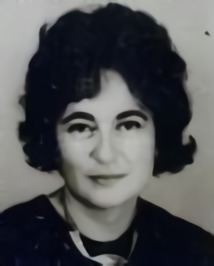
Born in South Africa in 1925, Ruth First was the editor of a radical newspaper, working as an investigative journalist exposing racial segregation policies and highlighting the women’s anti-pass campaign. She was imprisoned for her views, before being exiled to London where she continued the fight against apartheid up until she was killed by a letter bomb, most likely by order of South African Police. Today, she is remembered for her incredible life work as a freedom fighter5.
Claudia Jones
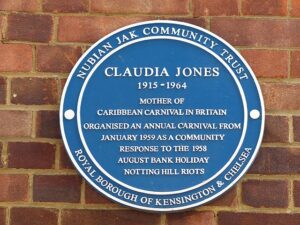
Image source: Megalit, Licence: Wikimedia Commons
“No peace can be obtained if any women, especially those who are oppressed and impoverished, are left out of the conversation”
Claudia Jones, a trailblazing activist, is best known for being one of the founders of Notting Hill Carnival. She worked to empower women to be more involved in activism, by campaigning for equal pay, wartime childcare programs, and babysitter funds, as well as protesting against racism in housing, education and employment6. She also founded Britain’s first major Black newspaper, the West Indian Gazette. Today, Notting Hill is famous for its yearly carnival. In 1958, it was making headlines for riots. Claudia Jones responded by organising a peaceful walk which celebrated Caribbean culture, emphasising unity, cultural pride and resilience7.
Princess Sophia Duleep Singh
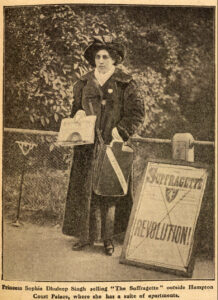
Princess Sophie Duleep Singh was truly a woman ahead of her time. She defied conventions in so many different ways, breaking barriers for those who came after her. As the daughter of Maharaja Sir Duleep Singh and goddaughter of Queen Victoria, she grew up in luxury under the favour of British Royalty. A clandestine trip to her homeland, Lahore, revealed the harsh realities of British colonial rule. She saw first hand what had been taken from her family, and the widespread poverty inflicted upon her people.
Duleep Singh returned home to England with a renewed desire to change lives. She used her celebrity status and influence to advance the suffrage movement, defiantly selling copies of The Suffragette outside Royal Hampton Court Palace, placing a copy right onto the front of the Prime Minister’s Car, and even directly protecting a protestor in the Black Friday protests, standing up against police violence. In protest, she stopped paying taxes, sacrificing her wealth for the suffrage cause. In the First World War, she volunteered as a nurse, tending to injured Indians. And let it not be forgotten that she was also one of the first women in the UK to ride a bike in public8!
Olive Morris
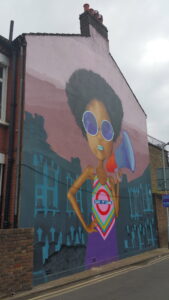
Image source: Chris, Licence: Wikimedia Commons
Morris was an activist, feminist, and community leader. She was born in Jamaica and moved to London at the age of nine. After being assaulted by met police at just 17 years old, she was inspired to join the British Black Panthers to campaign for equality and justice around race9. She believed in the power of community, founding mutual aid and co-operative groups, working tirelessly to improve housing rights and improve education for Black children in her community10. Her life work is commemorated by the Remembering Olive Collective and her inclusion on the Brixton Pound11.
Beatrice Webb
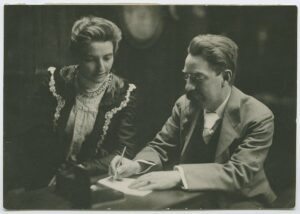
Beatrice Webb shares a plaque with her husband, Sidney Webb. Together, they were writers, social reformers, and made up two of the four co-founders of the London School of Economics and Political Science12.
While she was not part of the suffragette movement, and was reluctant to be, as she saw it, ‘side-lined’ into women’s rights only13, she wrote many influential pieces on the advancement of women’s rights, alongside her other work on social reform. This included advocating for better working rights for women in factories, encouraging women to join unions14, and arguing for equal pay15.
Next time you’re in London, why not explore the city through the lens of trailblazing women by visiting some of these plaques?
So many of the rights we enjoy today are thanks to the work of the incredible women who came before us. From suffragettes to activists, the impacts of their tireless efforts are all around us.
Sources:
1 – Kirka, D. Making a mark: London’s historic blue plaques seek more diversity as 1,000th marker is unveiled, 19 September 2023, The Independent. Available here
2- Warner, T. ‘THE BLUE PLAQUES HONOURING BLACK AND CARIBBEAN HISTORY IN LONDON’, History.co.uk. Available here
3 – ‘English Heritage want more plaques for women’, 30 October 2018, English Heritage. Available here
4 – The Nubian Jak Community Trust. Available here
5 – Ruth First, South African History Online. Available here
6 – Nasar, S. ‘The ‘Mother’ of Notting Hill Carnival: Claudia Jones’, University of Bristol. Available here
7 – Claudia Jones Blue Plaque, 19 February 2023. The Nubian Jak Community Trust. Available here
8 – ‘Sophia Duleep Singh The Indian Princess Who Fought for Women’s Rights’, Royal Historical Palaces. Available here
9 – ‘How Olive Morris Fought for Black Women’s Rights in Britain’, 29 December 2021, Black History Month. Available here
10 – Osborne, A. Black History Month: The power of Olive Morris, 2 October 2018, The Fawcett Society. Available here
11- ‘Google Doodle: Who was Olive Morris?’ 26 February 2020, BBC News. Available here
12 – Meet Beatrice Webb – LSE co-founder and social reformer, 22 January 2019, LSE History Blog. Available here
13 – ‘Beatrice Webb: A biography’, Rethinking Poverty. Available here
14 – Webb, B. ‘Women and the Factory Acts’, 1896. London: Fabian Society
15 – Webb, B. ‘Men’s and Women’s Wages: Should They be Equal?’, 1919. London: Fabian Society
